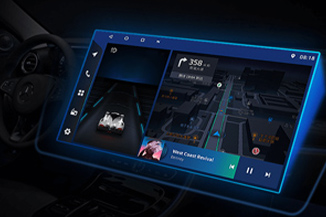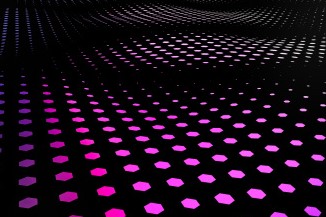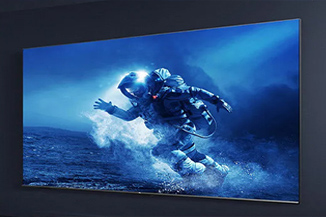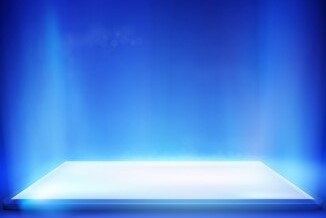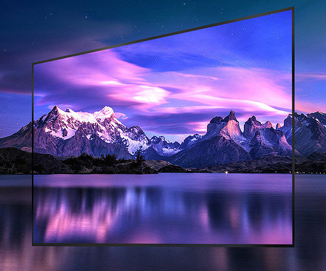Publisher: Supplier of LED Display Time: 2022-03-11 14:00 Views: 2167
Analysis of light safety problems of LED display
1. Optical safety classification
In general, light safety can be divided into the following two categories, namely, photobiological safety and interference light.
Photobiosafety
The main research scope of this type of light safety includes ultraviolet, infrared, blue light and visible light radiation on human tissue damage. The common photobiological hazards mainly include the harm of photochemical ultraviolet to human skin and eyes, the harm of blue light to human retina, the harm of infrared installation to the eyes, and the harm of light and heat to the skin and so on.
Among all the sensory organs of the human body, the eye is the most important part, and its self-healing ability is relatively weak. Once it is exposed to external optical radiation, it will cause irreversible damage to the eye, even visible light may harm people's eyes. In the eyes, for example, short-wavelength blue light can cause damage to retinal photoreceptor cells, and in severe cases, it may cause the degeneration of pigment epithelium function, and high-intensity irradiation can cause retinal thermal damage.
disturbing light
Interference light is divided into two types: direct and indirect. The former refers to the decrease in visual resolution directly caused by the luminous body with higher brightness in the field of view; the latter refers to the luminous body that does not directly appear in the field of view, but the light is projected. The problem caused by the reflection of the surface of the object into the human eye.
Through the investigation of some domestic LED display manufacturers, it is found that the maximum brightness of the LED display is 6 000~8 000 cd/m2, which does not reach the minimum brightness value of the photobiological safety problem. Does not cause photobiological hazards, including blue light hazards, to the human retina. In view of this, the following will focus on the analysis of the interference light problem of the LED display.
2. Reasons for the formation of LED display interference light
personal reasons
The LED display has the characteristics of high brightness. If the brightness output of the display reaches 8000 cd/m2 in the dark night, it will cause serious light interference.
location reason
The closer the distance between the observer and the display screen, or the larger the diagonal angle formed between the standing position and the display screen, or the closer the observer's line of sight is to the direction of the display screen, the more serious interference light will be generated.
Illumination reason
There is a significant difference in ambient illuminance between day and night, which also causes the same brightness LED display to produce different degrees of interference light in different time periods.
Observer reason
Observers of different ages, occupations, health conditions, and psychological emotions will experience different levels of interference light. For example, observers who are frequently exposed to photosensitizers or suffer from eye diseases are more sensitive to light.
Content display reason
If the content of the image displayed on the display screen changes too quickly, it will easily cause discomfort to the observer; if the color brightness is too high and the transition is blunt, it will also cause discomfort to the human eye.
Reason for evaluation criteria
Display screens are used in many places, such as road traffic, commercial areas, residential areas, etc. Due to the different nature of the places, the evaluation criteria for interference light are also different.
environmental reasons
Environmental conditions will have a significant impact on the interference light of the display screen. If the environmental conditions are relatively harsh, such as haze, dust, fog, heavy rain, strong wind and other weather, it will affect people's judgment on the interference light of the display screen. Under the influence of external factors, the judgment standard will be inaccurate and the objectivity of the evaluation will be affected.
Solutions to the problem of light pollution in LED displays
The high brightness of LED displays is an important cause of light pollution. In order to effectively solve the problem of light pollution, the following safety protection methods can be adopted.
1. Adjust the brightness depending on the environment
Adjust the brightness that is comfortable for the human eye
Adjust the overall brightness of the LED display screen according to the ambient light intensity of the display screen, so as to ensure the clarity of the display screen while avoiding dazzling and dazzling bad visual experience. According to the investigation and research, if the human eye is accustomed to the ambient brightness of 800 cd/m2, the brightness that the human eye can see clearly is 80~8 000 cd/m2. . Therefore, the LED display should rely on the environment to adjust the brightness, and introduce environmental brightness monitoring equipment to provide a reliable basis for brightness adjustment, so that the brightness of the display can be adjusted to a comfortable viewing range for the human eye. During the night, the brightness of the display should be controlled below 10 times the ambient brightness.
Introduce brightness adjustment standard
The brightness of many outdoor displays is too high at night, causing serious light pollution and affecting the lives of surrounding residents to a certain extent. To this end, relevant departments should issue display brightness adjustment standards, strengthen the prevention and control of light pollution, require display users to actively adjust the brightness output according to the ambient brightness, and strictly prohibit the output of high brightness and strong light in the dark night.
2. Cut Blu-ray output
Different wavelengths of light will bring different visual perception to the human eye. Due to the complexity of human eye perception, it is difficult to reflect the human eye's perception of light through the measurement standard of brightness. Therefore, the irradiance index can be introduced. It serves as a criterion for judging the safe energy range of visible light. When measuring the effect of light on the human eye, we should not only rely on the human eye's perception of the brightness of blue light, but introduce irradiance measurement equipment, and use the data measured by the measurement equipment to objectively reflect the impact of blue light output intensity on visual perception. . Manufacturers of LED display screens should appropriately reduce the output of blue light on the basis of ensuring the display function of the display screen, so as to avoid discomfort to the human eye.
3. Control the spread of light
The light of the LED display screen should be arranged reasonably, and the light energy output by the display screen should be evenly distributed within the visible scale of the human eye, so as to avoid the problem of local glare of the display screen. This requires that when producing LED displays, the direction and scale of light irradiation must be strictly limited in order to effectively control the light pollution of LED displays.
4. Express safety protection methods
In the instruction manual of the LED display product, the precautions for safety protection should be marked, focusing on explaining the correct method of adjusting the brightness of the LED display screen, and clarifying the possible damage caused by the human eye looking directly at the display screen for a long time. If the automatic brightness adjustment system of the display screen fails, the brightness can be adjusted manually. At the same time, it is necessary to popularize the safety protection measures of light pollution to the public to enhance the self-protection ability of the public. For example, if you cannot look directly at the display screen for a long time, try to avoid the human eye focusing on the details on the display screen, avoid visual bright spots caused by the LEDs gathering in the fundus, and even cause burns to the retina in severe cases.
5. Improve product performance and quality
In order to ensure the performance of LED display products, the brightness detection of products in indoor and outdoor environments should be strengthened. In the process of indoor inspection, the staff must wear black sunglasses with a brightness attenuation of 2 to 4 times, and observe whether there is any problem with the details of the display screen at a close range. During the outdoor detection process, the staff should wear black sunglasses with a brightness attenuation of 4 to 8 times. Especially in the dark environment, the staff must wear safety protection tools, so as to avoid the staff being exposed to strong light.
6. Introduce advanced technology
There are obvious differences in the brightness changes of the LED display in different time periods and different places. Once the brightness output of the display screen exceeds 60% of the ambient brightness, it will bring discomfort to the human eye and cause light pollution. Therefore, the LED display should be equipped with an outdoor brightness acquisition system to collect the ambient brightness in real time, and transmit the ambient brightness information to the central control room. The central control room automatically calculates the most suitable display output brightness based on the received data information. , and use this as the basis for brightness adjustment.
In addition, multi-level grayscale correction technology should be introduced into the LED display screen to improve the problem of blunt color transition in ordinary 8-bit color display screens and avoid strong discomfort to the human eye. With the support of multi-level grayscale correction technology, the color display level of the original display system can be increased to 14 bits, so as to bring soft color transition to human eyes and reduce the stimulation of light to human eyes.
Epilogue
To sum up, as a light source, the LED display screen will inevitably have light safety and light pollution problems during its operation. On the basis of , take reasonable and feasible measures to eliminate the light pollution of LED display, which can not only provide protection for human health, but also help to expand the application scope of LED display.
